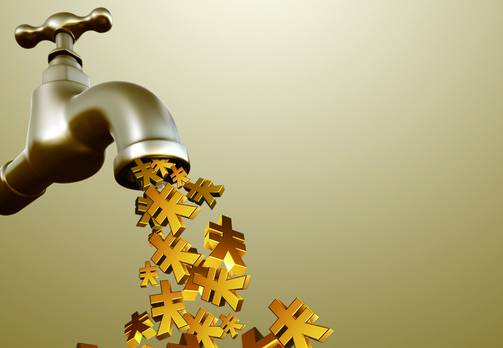Economic Recovery Slow, 5% Growth Possible Next Year
Recent economic data released by China has unexpectedly outperformed expectations. In the view of Sheng Songcheng, a former official of the People's Bank of China (PBOC), the economy has stabilized and is showing signs of recovery. The intensity of subsequent monetary and fiscal policies will not weaken. Although the current recovery is expected to be a relatively slow process, it is still possible to achieve a growth rate of around 5% next year.
"The rebound in the third quarter will not be a flash in the pan," said Sheng Songcheng, a professor at China Europe International Business School and former director of the PBOC's Statistics Department, in a telephone interview with Bloomberg News last week. A growth rate of around 5% next year is necessary, and it is also possible to achieve this as long as support for the macroeconomy, as well as efforts to prevent risks and structural reforms, remains strong.
Advertisement
He also pointed out that unlike the recovery after previous rounds of economic adjustments, this round of recovery will be relatively slow. In addition to the international environment being different from before, China is also facing two prominent issues: real estate and local government debt. Solving these two issues will require a longer period.
After the Political Bureau of the CPC Central Committee proposed the formulation and implementation of a comprehensive debt resolution plan at the end of July, local governments have recently been accelerating the issuance of special refinancing bonds to repay hidden debts. PBOC Governor Pan Gongsheng said over the weekend that a series of documents will be formulated to resolve the debt risks of financing platforms. As for the real estate market, although a series of measures have been introduced in various places over the past few months to stimulate housing demand, data on residential sales and real estate development investment show no significant signs of improvement in the property market.
A survey of economists by Bloomberg shows that although China's economic growth rate is expected to reach the government's target of 5% this year, the current median forecast for next year's growth rate is 4.5%. This also means that if this target is to be achieved, further policy efforts may be needed.
Taking the data of China's residential sales area as an example, 1.57 billion square meters of residential space were sold in 2021, but it dropped to 1.15 billion square meters last year. "It would be great if we could sell 900 million square meters this year," Sheng Songcheng said, and this estimate means that there will continue to be a double-digit decline this year.

"The real estate issue is a relatively thorny issue for our country at present," he believes that the real estate market will develop in an 'L' shape in the future. Considering that local governments can no longer support urbanization development by selling land as in the past, local governments are facing a situation where income is reduced but expenditures are not small, and debt issues will be one of the main risks.
Regarding monetary policy, Sheng Songcheng said that there is still room for reserve requirement ratio cuts and interest rate cuts in the fourth quarter of this year and next year, but reserve requirement ratio cuts are better than interest rate cuts. The probability of interest rate cuts next year will be smaller because China's interest rate levels are already very low.
"If interest rates continue to be reduced, the pressure on banks' net interest margins will be greater," Sheng Songcheng said. China's commercial banks are the main buyers of government bonds and local bonds, and they need to cooperate with fiscal policy. At the same time, they also need to bear the responsibility of supporting the economy and resolving financial risks. "So we need to protect our commercial banks well."In addition, following the interest rate cut, the spread between the interest rates of the Chinese yuan and the US dollar has further widened. Although the People's Bank of China has taken a series of measures to stabilize the exchange rate, including setting a stronger central parity rate, window guidance, tightening offshore yuan liquidity, and reducing the foreign exchange reserve requirement ratio, the depreciation of the yuan both domestically and internationally in the third quarter has been significantly reduced. However, the cumulative depreciation for the year still exceeds 5.5%.
"China's monetary policy needs to consider both internal and external balance. If the interest rate differential between China and the US continues to expand, the pressure on the yuan exchange rate will further increase, which is also one of the reasons why China is more cautious about interest rate cuts," said Sheng Songcheng.
He further pointed out that the market is quite anxious about the current economic recovery. However, the social financing scale, as a leading indicator of the economy, has prominent characteristics. The bottoming out and stabilization of the social financing data in August is a turning point, and the warming trend in September has been further consolidated. As a unique indicator of China, the social financing scale fits China's national conditions and involves the vast majority of funds in the entire economic operation process. Judging from the social financing growth rate, a stable economic recovery in the coming months is expected.
Leave A Comment